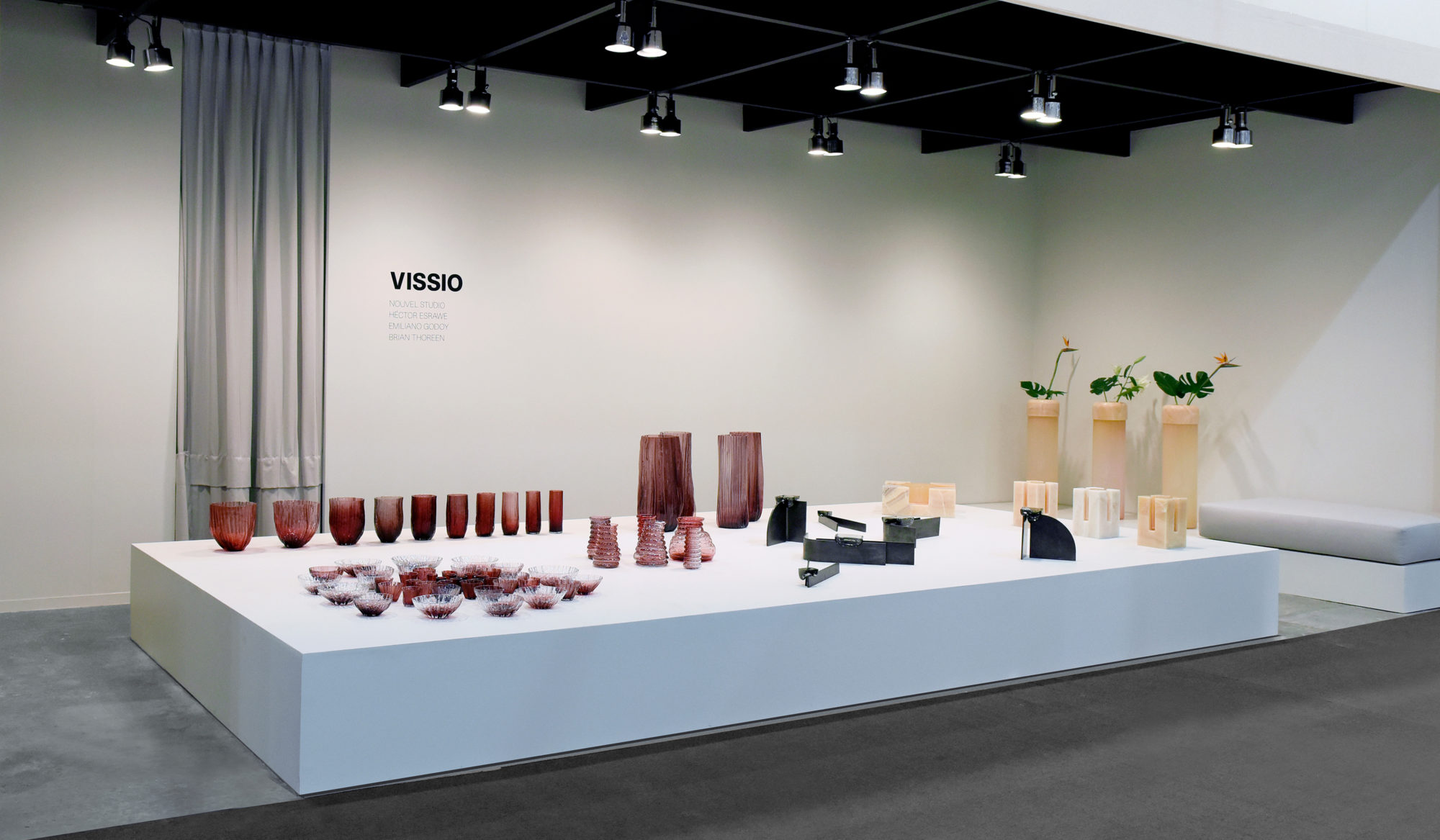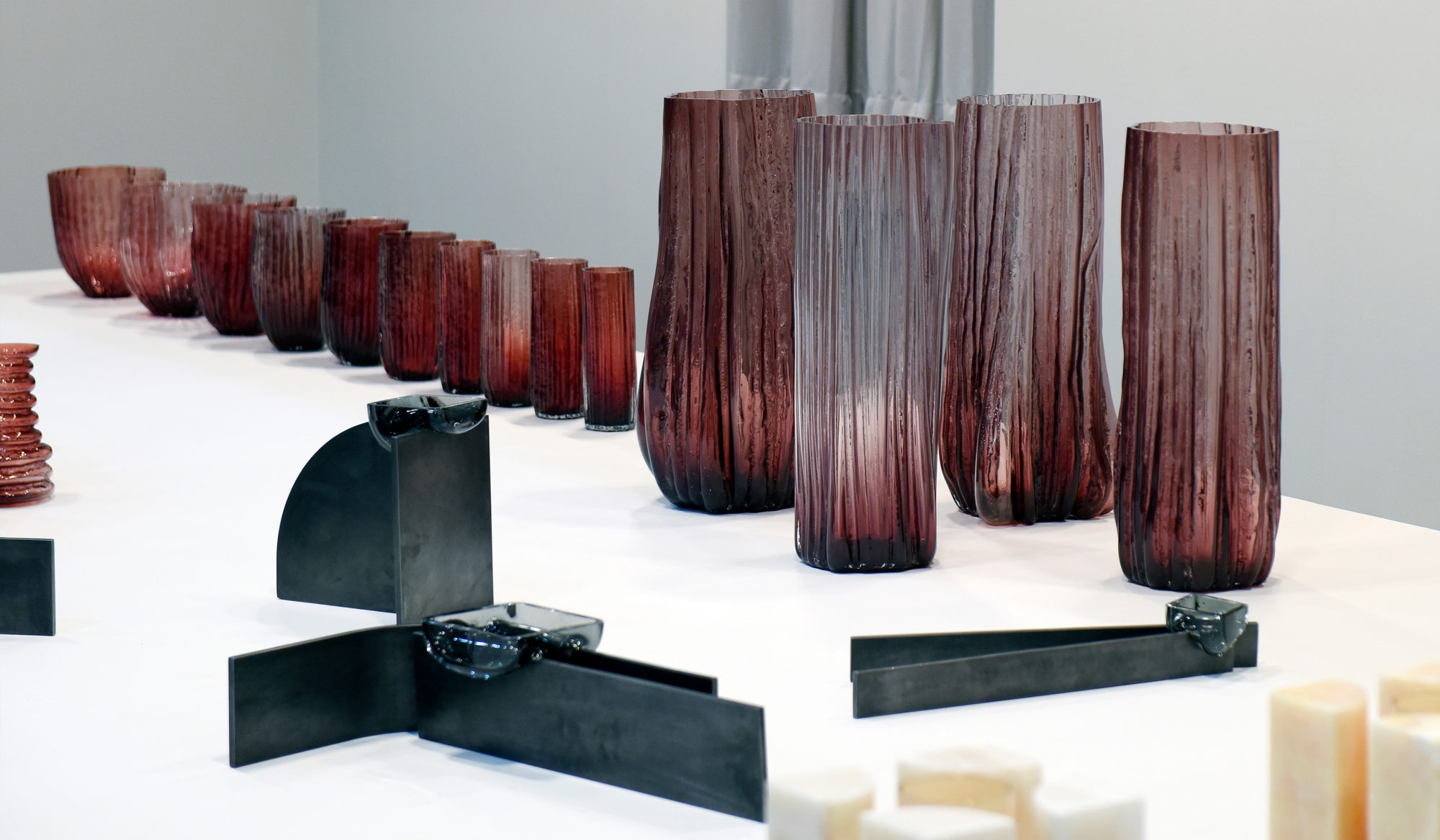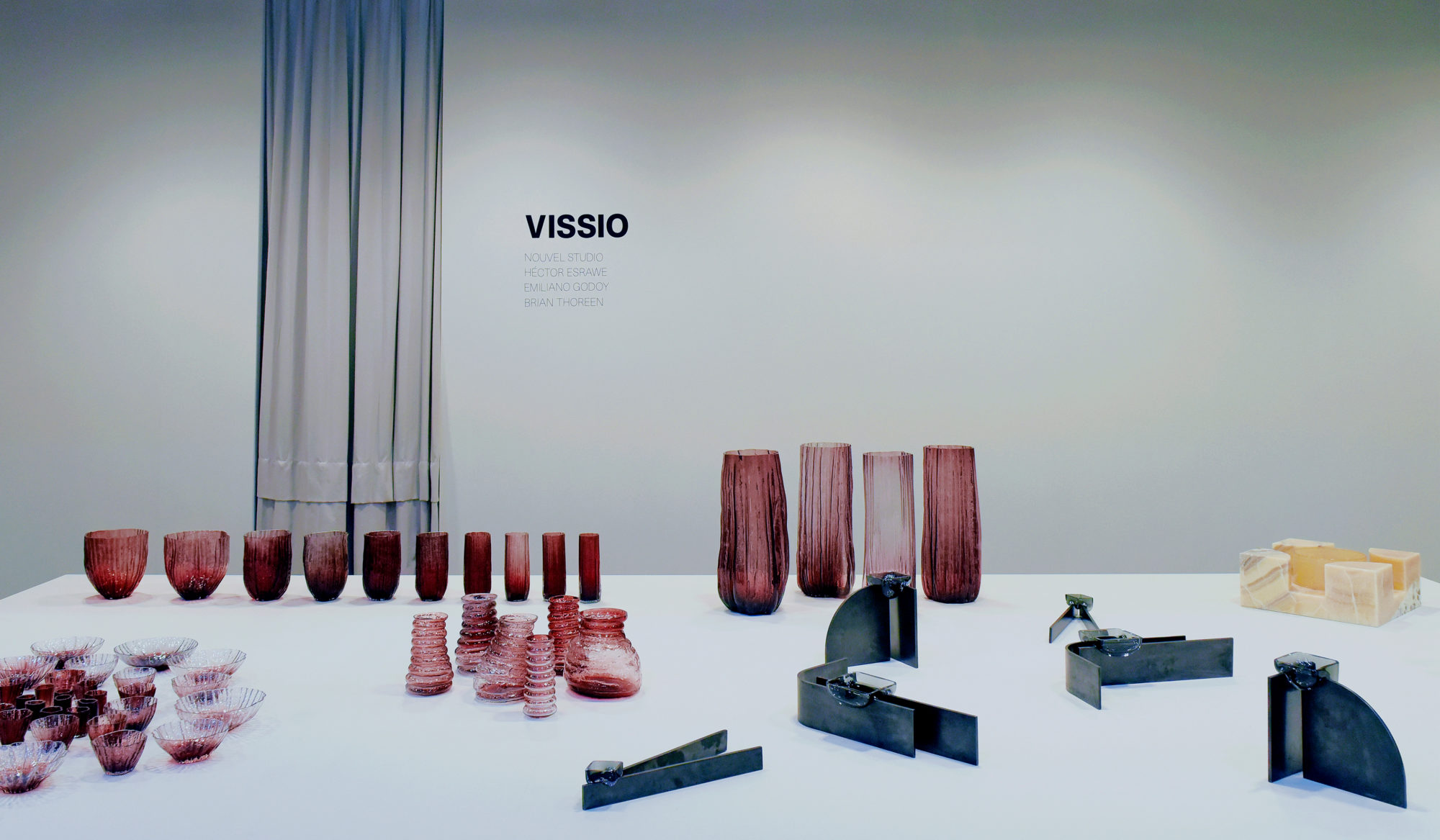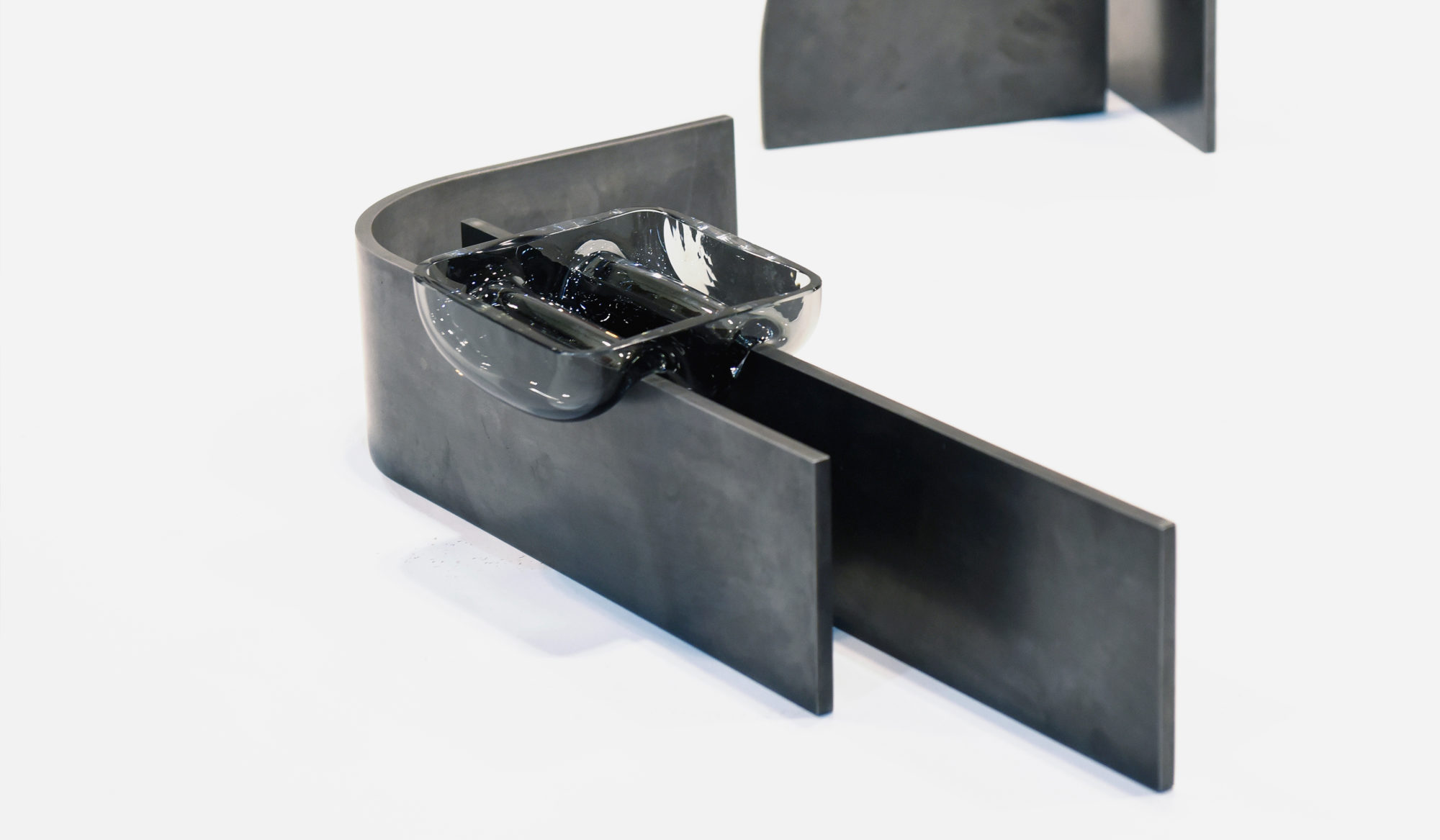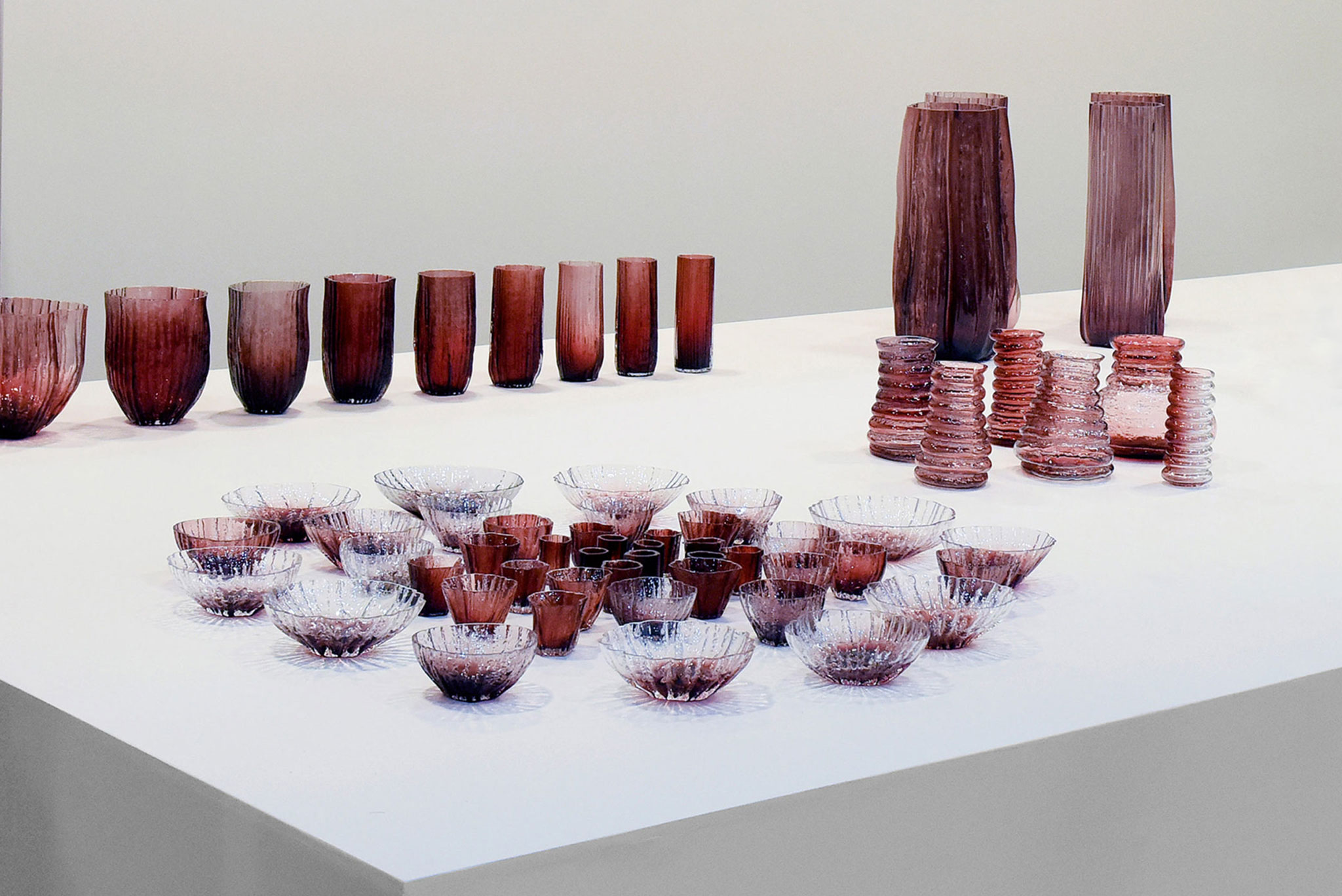Launching new works Apricot Dream, 2B1G, and Burnout by Héctor Esrawe, Emiliano Goody and Brian Thoreen for Vissio at Zona Maco 2019.
When designers Hector Esrawe, Emiliano Godoy, and Brian Thoreen were first invited to produce a series of works for Nouvel Studio’s 2018 Zona Maco presentation they found their dynamic of playful collaboration fruitful beyond physical objects. “We worked on this experimental stuff that was just going to be for [Zona] Maco 2018 but through that process it became clear that something interesting was starting and it had the foundations of something, a brand or platform for people to collaborate with Nouvel in more experimental ways.” says Thoreen.
A year later, their experimental ethos has evolved from a studio collaboration of creatives to a deepened commitment to pushing boundaries of experimental glass pieces in the form of the launch of Vissio, an experimental platform that invites designers, artists, and architects to collaborate with Nouvel Studio to produce unique and limited edition glass works.
Working with Nouvel Studio’s expert artisans deliberately frees Vissio from the trappings of working with a technically complex material like glass, allowing for emphasis on the conceptual framework of the pieces. “We are interested in creating good design, beautiful, timeless pieces that show glass in interesting ways – whether that’s by combining it with other materials or not.
We want to curate the collaborators we work with in the future based on their ideas and thinking not on their familiarity with glass.” Explains Godoy.
The three families of works in Vissio’s 2019 launch presentation plant the flag of a radical openness to experimental design processes. The newest family of works, Burnout, hinges on a formal exploration of the effects of entropy. Casting series of pieces from a single plywood mold, each run registers the unique burn pattern of the mold by the molten glass.
Functioning a bit like a game of chance, in these works the designers set the “rules” of the piece and let convection determine the evolution of the final shapes. The nature of the process of these works is such that no piece can ever be replicated, as their form reflects the ambient conditions present at the moment of casting.
“Each piece gives birth to new ideas and so if you use the idea of language it’s like wordplay, like a continuous game. That’s what’s nice about this process because you start to compile ideas, they come easily and there’s an abundance of them that we haven’t had time to explore yet. So, Bedrock and Precarious are starting points but the new pieces are different in their own way.” says Esrawe.
The three new works in the Apricot Dream series can be thought of as formal compositions of reflection and refraction based around a celebration of juxtaposition of surfaces. These pieces emphasize the beauty of the materials through geometric arrangements. While functional as vessels, it’s the interplay of light—illuminating creamy matte onyx, bouncing off polished stone and glinting off the glass that is responsible for the pieces’ aura.
Finally, 2B1G represents the evolution of the Precarious series which conceptually hinges on the beauty and anxiety provoked by glass balancing precipitously on rectilinear metallic bases. In this new iteration of the series, the team has reimagined the scale of Precarius with glass hugging steel-plate bases. Through formal interplay of rigidity with elevated fragility the piece highlights the materials’ physical properties.
Much in the spirit of Vissio’s collaborative approach, pieces in the Precarius series rely on collective participation to maintain stability. There are no fasteners or glue holding the piece’s elements together. It’s the balance of forces that allows the piece to be more than the sum of its parts.
